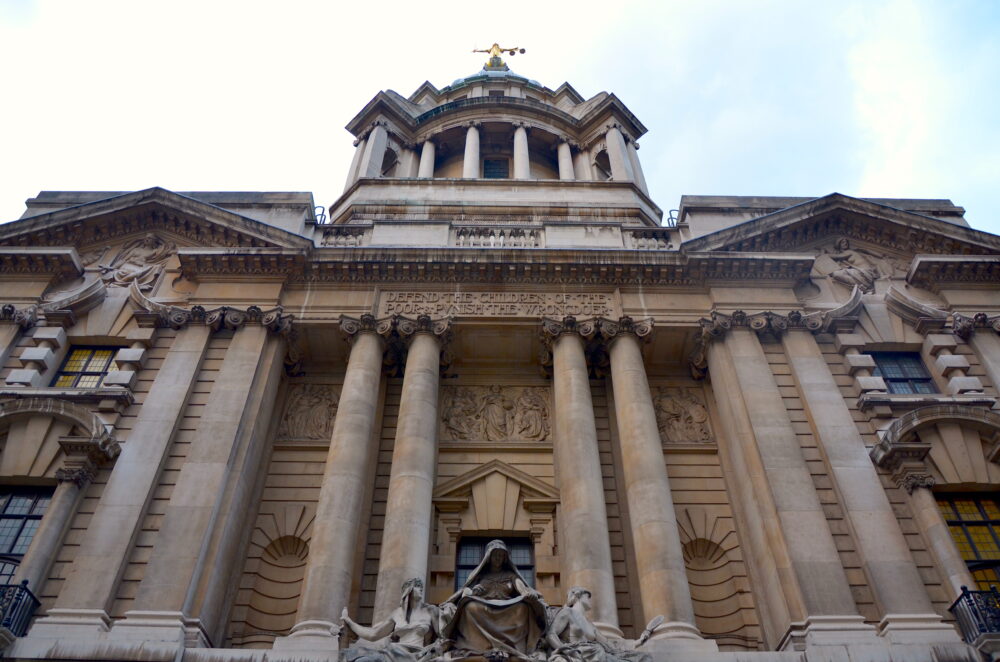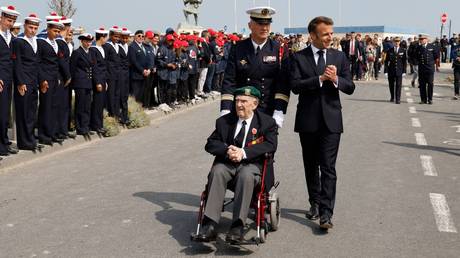Craig Murray: Your Man in the Public Gallery–Day One
by Craig Murray, Consortium News:
 Here is Craig Murray’s report on the first day of the resumption of Julian Assange’s hearing, the 5th day overall continuing from the start of the substantive hearing in February.
Here is Craig Murray’s report on the first day of the resumption of Julian Assange’s hearing, the 5th day overall continuing from the start of the substantive hearing in February.
I went to the Old Bailey today (Monday) expecting to be awed by the majesty of the law, and left revolted by the sordid administration of injustice.
There is a romance which attaches to the Old Bailey. The name of course means fortified enclosure and it occupies a millennia old footprint on the edge of London’s ancient city wall. It is the site of the medieval Newgate Prison, and formal trials have taken place at the Old Bailey for at least 500 years, numbering in the hundreds of thousands. For the majority of that time, those convicted even of minor offences of theft were taken out and executed in the alleyway outside. It is believed that hundreds, perhaps thousands, lie buried under the pavements.
The hefty Gothic architecture of the current grand building dates back no further than 1905, and round the back and sides of that is wrapped some horrible cheap utility building from the 1930’s. It was through a tunnelled entrance into this portion that five of us, Julian’s nominated family and friends, made our nervous way this morning. We were shown to Court 10 up many stairs that seemed like the back entrance to a particularly unloved works canteen. Tiles were chipped, walls were filthy and flakes of paint hung down from crumbling ceilings. Only the security cameras watching us were new – so new, in fact, that little piles of plaster and brick dust lay under each.
Court 10
Court 10 appeared to be a fairly bright and open modern box, with pleasant light woodwork, jammed as a mezzanine inside a great vault of the old building. A massive arch intruded incongruously into the space and was obviously damp, sheets of delaminating white paint drooping down from it like flags of forlorn surrender.
The dock in which Julian would be held still had a bulletproof glass screen in front, like Belmarsh, but it was not boxed in. There was no top to the screen, no low ceiling, so sound could flow freely over and Julian seemed much more in the court. It also had many more and wider slits than the notorious Belmarsh Box, and Julian was able to communicate quite readily and freely through them with his lawyers, which this time he was not prevented from doing.
Rather to our surprise, nobody else was allowed into the public gallery of court 10 but us five. Others like John Pilger and Kristin Hrafnsson, editor in chief of Wikileaks, were shunted into the adjacent court 9 where a very small number were permitted to squint at a tiny screen, on which the sound was so inaudible. John Pilger simply left.
Many others who had expected to attend, such as Amnesty International and Reporters Without Borders, were simply excluded, as were MPs from the German federal parliament (both the German MPs and Reporters Without Borders at least later got access to the inadequate video following strong representations from the German Embassy).
The reason given that only five of us were allowed in the public gallery of some 40 seats was social distancing; except we were allowed to all sit together in consecutive seats in the front row. The two rows behind us remained completely empty.
To finish scene setting, Julian himself looked tidy and well groomed and dressed, and appeared to have regained a little lost weight, but with a definite unhealthy puffiness about his features. In the morning he appeared disengaged and disoriented rather as he had at Belmarsh, but in the afternoon he perked up and was very much engaged with his defence team, interacting as normally as could be expected in these circumstances.
Proceedings started with formalities related to Julian’s release on the old extradition warrant and re-arrest under the new warrant, which had taken place this morning. Defence and prosecution both agreed that the points they had already argued on the ban on extradition for political offences were not affected by the superseding indictment.
Magistrate Baraitser then made a statement about access to the court by remote hearing, by which she meant online. She stated that a number of access details had been sent out by mistake by the court without her agreement. She had therefore revoked their access permissions.
As she spoke, we in the court had no idea what had happened, but outside some consternation was underway in that the online access of Amnesty International, of Reporters without Borders, and of forty others had been shut down. As these people were neither permitted to attend the court nor observe online, this was causing some consternation.
Baraitser went on to say that it was important that the hearing was public, but she should only agree remote access where it was “in the interests of justice”, and having considered it she had decided it was not. She explained this by stating that the public could normally observe from within the courtroom, where she could control their behaviour. But if they had remote access, she could not control their behaviour and this was not in the “interests of justice”.
Baraitser did not expand on what uncontrolled behaviour she anticipated from those viewing via the internet. It is certainly true that an observer from Amnesty sitting at home might be in their underwear, might be humming the complete soundtrack to Mamma Mia, or might fart loudly. Precisely why this would damage “the interests of justice” we are still left to ponder, with no further help from the magistrate. But evidently the interests of justice were, in her view, best served if almost nobody could examine the “justice” too closely.
The next “housekeeping issue” to be addressed was how witnesses should be heard. The defence had called numerous witnesses, and each had lodged a written statement. The prosecution and Baraitser both suggested that, having given their evidence in writing, there was no need for defence witnesses to give that evidence orally in open court. It would be much quicker to go straight to cross-examination by the prosecution.
For the defence, Edward Fitzgerald QC countered that justice should be seen to be done by the public. The public should be able to hear the defence evidence before hearing the cross-examination. It would also enable Julian Assange to hear the evidence summarised, which was important for him to follow the case given his lack of extended access to legal papers while in Belmarsh prison.
No Need for Oral
Baraitser stated there could not be any need for evidence submitted to her in writing to be repeated orally. For the defence, Mark Summers QC was not prepared to drop it and tension notably rose in the court. Summers stated it was normal practice for there to be “an orderly and rational exposition of the evidence”. For the prosecution, James Lewis QC denied this, saying it was not normal procedure.
Read More @ ConsortiumNews.com



